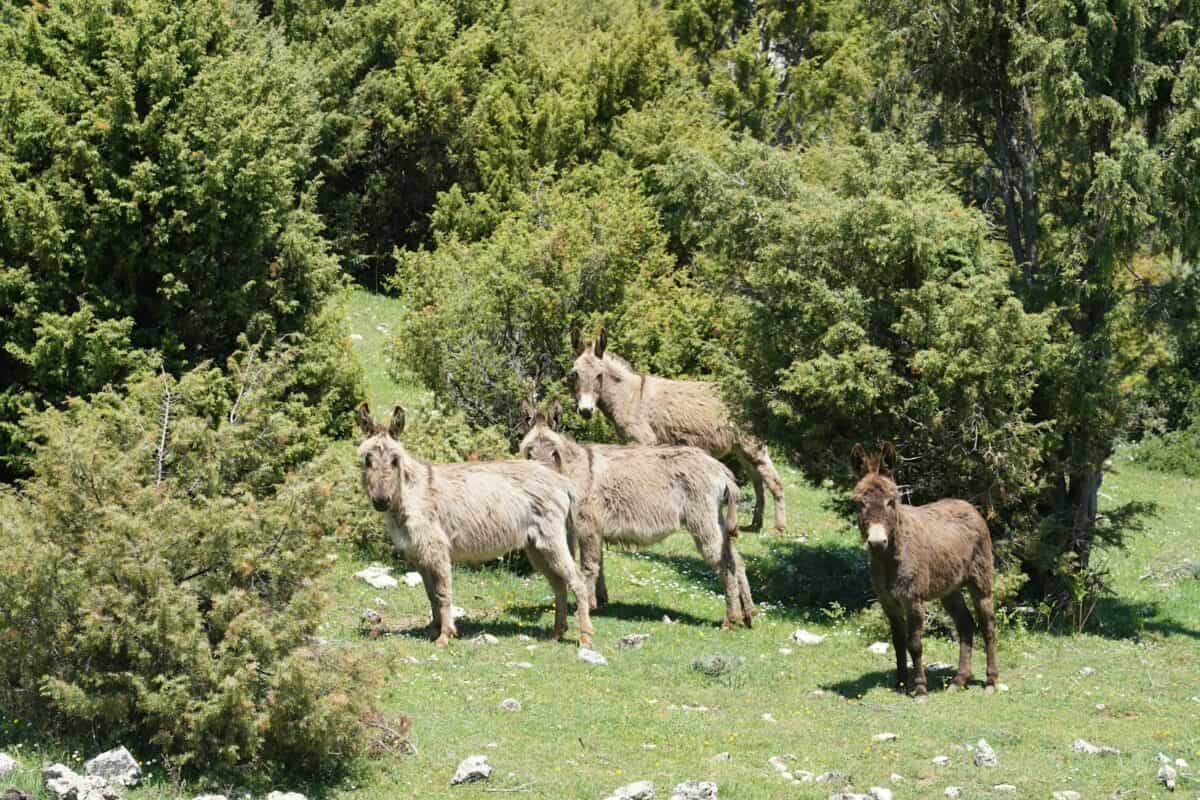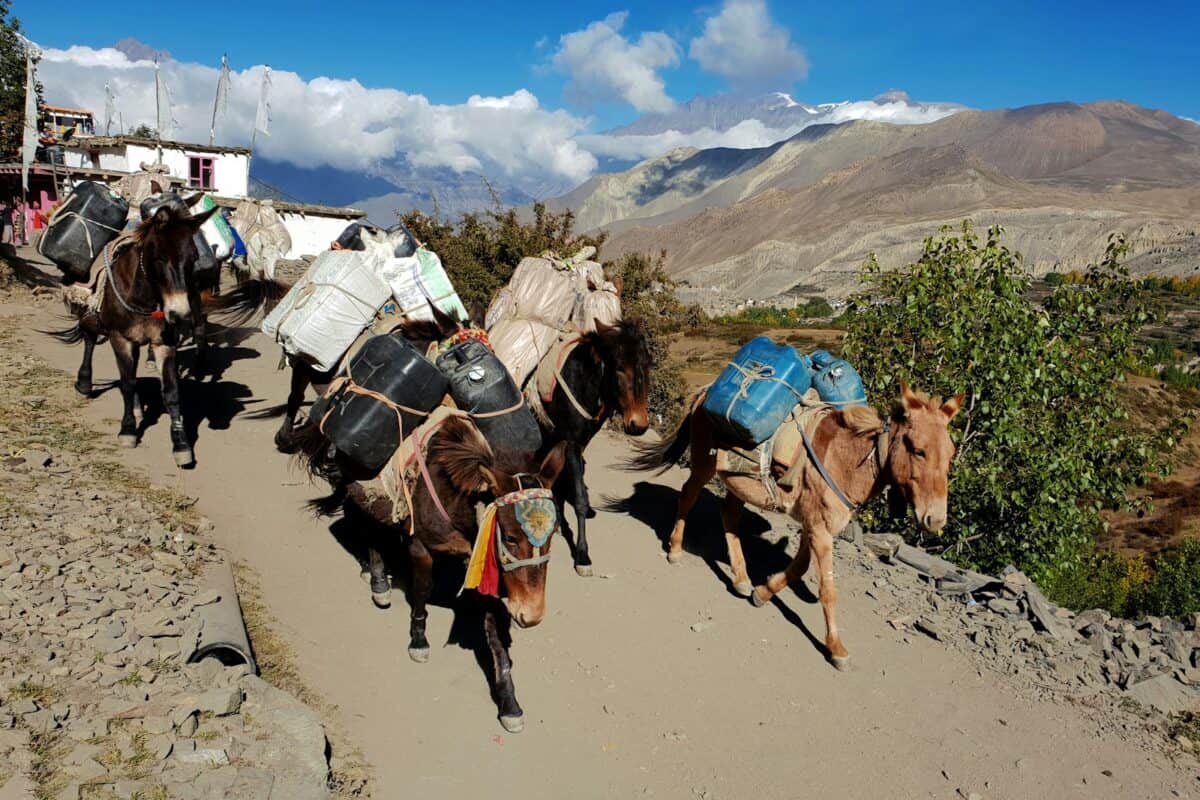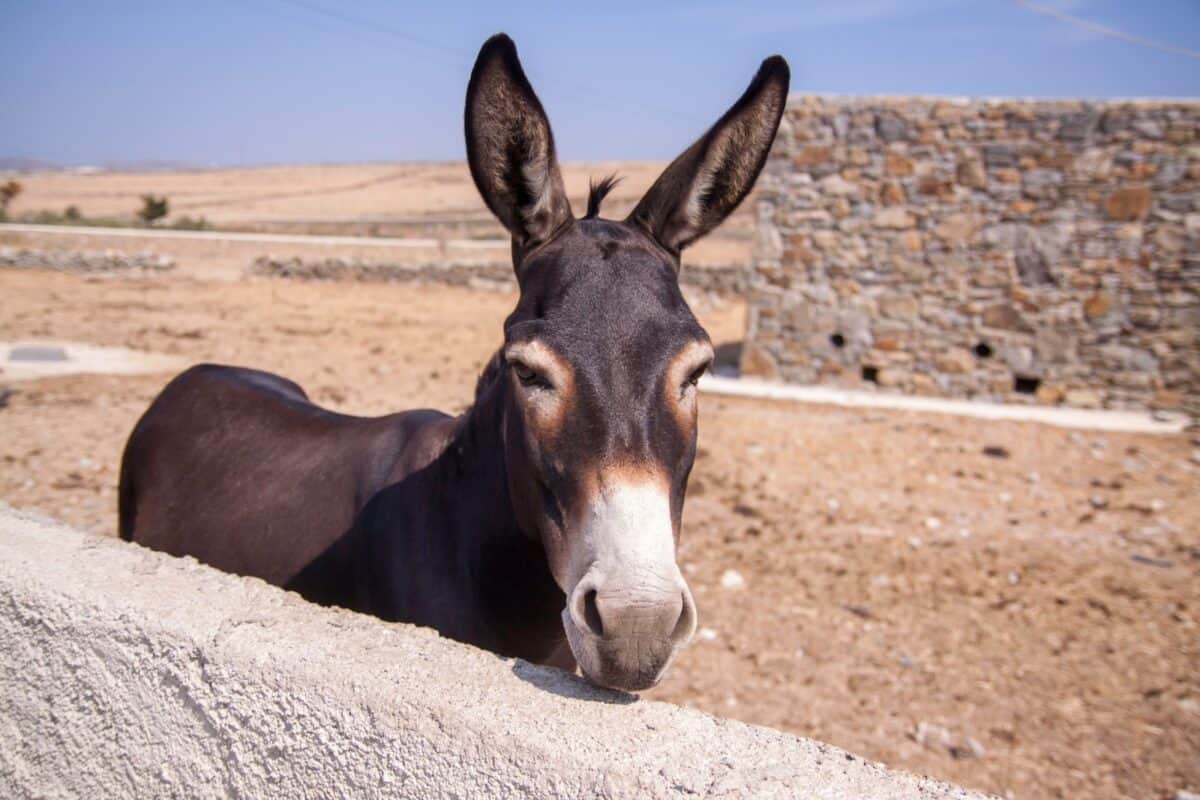In the rugged landscapes where few creatures thrive, wild donkeys stand as testament to resilience and adaptation. These remarkable equids, often overlooked in favor of their more glamorous cousins, possess extraordinary physical strength matched only by their social intelligence and complex behavioral patterns. From the scorching deserts of Africa to the mountainous regions of Asia, wild donkeys have carved out a niche that showcases their incredible endurance and surprising loyalty. This exploration of wild donkeys reveals not just their biological adaptations but also the deep bonds they form within their social structures—bonds that challenge our understanding of animal relationships and demonstrate sophisticated emotional intelligence.
The Evolutionary Journey of Wild Donkeys

Wild donkeys, scientifically known as Equus asinus, share a common ancestor with horses and zebras that lived approximately 4-4.5 million years ago. The African wild ass (Equus africanus), native to the Horn of Africa, is considered the primary ancestor of the domestic donkey, with domestication occurring around 5,000-6,000 years ago in Egypt or Mesopotamia. This evolutionary journey has equipped donkeys with exceptional adaptations to harsh environments, including efficient water conservation mechanisms and the ability to extract nutrients from low-quality vegetation. Unlike horses, which evolved primarily in grassland habitats, wild donkeys adapted to arid, mountainous terrain, developing stronger hooves, larger ears for heat dissipation, and a more efficient digestive system to process fibrous plant material. These evolutionary adaptations explain their legendary hardiness and ability to thrive where other equids cannot survive.
Physical Adaptations for Extreme Environments

Wild donkeys possess remarkable physical adaptations that enable their survival in some of Earth’s most challenging environments. Their large ears serve a crucial thermoregulatory function, dissipating heat through an extensive network of blood vessels. Unlike horses, donkeys can tolerate water loss of up to 30% of their body weight, making them extraordinarily drought-resistant. Their specialized digestive system allows them to extract maximum nutrition from sparse, fibrous vegetation, requiring as little as half the food intake of similarly-sized horses. Their hooves are exceptionally hard and self-trimming, evolved for traversing rocky, mountainous terrain without injury. Perhaps most impressive is their metabolic efficiency—wild donkeys maintain stable internal body temperatures even in extreme heat conditions, with specialized physiological mechanisms that conserve water and electrolytes. These adaptations collectively explain why wild donkeys can survive in deserts, mountains, and other harsh landscapes where few large mammals can establish sustainable populations.
Social Structures and Herd Dynamics

Contrary to popular misconception, wild donkeys maintain complex social structures that demonstrate sophisticated social intelligence. Unlike horses that typically live in stable family groups, wild donkeys operate in a “fission-fusion” social system, where group composition changes seasonally and situationally. Male donkeys (jacks) establish territories in resource-rich areas, while females (jennies) move between territories with their offspring. During breeding seasons, temporary herds may form, but the core social unit remains the mother-offspring pair, with bonds that can last for years. Research in the deserts of Arizona and California has revealed that wild donkeys maintain extensive social networks, recognizing dozens of individuals and remembering social relationships even after long separations. When resources are abundant, larger temporary herds may form for protection against predators. These fluid yet organized social arrangements allow wild donkeys to maximize survival in unpredictable environments while maintaining important social bonds that contribute to collective knowledge transfer and enhanced survival strategies.
Communication and Intelligence

Wild donkeys demonstrate sophisticated communication abilities through vocalizations, body language, and chemical signals. Their famous braying serves multiple purposes: territorial announcements, mate attraction, danger alerts, and group coordination. Each donkey possesses a distinctive vocal signature recognizable to other herd members, with acoustic analysis revealing complex information embedded in their calls. Beyond vocalizations, wild donkeys communicate through an elaborate system of ear positions, tail movements, and body postures that signal emotional states and intentions. Their cognitive abilities have impressed researchers, with studies showing they can solve complex problems, remember solutions for years, recognize and recall up to 25 individual donkeys, and navigate back to water sources across vast distances. Memory tests have revealed that donkeys outperform horses in certain cognitive tasks, particularly those involving long-term memory and spatial reasoning. This intelligence manifests in their ability to form strong, selective social bonds while maintaining mental maps of territories spanning hundreds of square kilometers—a cognitive feat that underscores their remarkable adaptive intelligence.
The Bond Between Mothers and Offspring

The mother-offspring relationship represents one of the strongest expressions of loyalty in wild donkey societies. Jenny donkeys invest extraordinarily in their foals, with gestation periods lasting 12-14 months—one of the longest among hoofed mammals. After birth, mothers maintain constant contact with their foals, rarely separating more than a few meters during the first weeks of life. The nursing relationship can extend up to two years, though most foals begin supplementing milk with vegetation within weeks. Research has documented remarkable protective behaviors, with mother donkeys positioning themselves between potential threats and their offspring, creating diversions to draw predators away, and even physically attacking dangers that threaten their young. The teaching relationship is equally impressive, with jennies systematically introducing foals to safe water sources, nutritious vegetation, and effective routes through difficult terrain. This knowledge transfer is critical to survival, as young donkeys must learn location-specific information about their environment. The strength of these bonds extends into adulthood, with many female offspring establishing home ranges that overlap with their mothers, creating extended family networks that share resources and protection responsibilities across generations.
Male Territorial Loyalty and Defense

Male wild donkeys (jacks) demonstrate remarkable territorial fidelity, often maintaining the same territories for their entire adult lives. These territories are not randomly selected but carefully chosen for access to critical resources like water, quality grazing, and shade. Jack donkeys mark their territories through dung piles called “stud piles” that serve as olfactory signposts, complemented by regular braying that announces their continued presence. The defense of these territories represents one of the most visible expressions of wild donkey loyalty, with males aggressively confronting intruders through ritualized displays that include braying contests, parallel walking, and, if necessary, physical combat. Research in the Sonoran Desert documented territorial males successfully defending areas averaging 2-8 square kilometers for periods exceeding seven years. This territorial loyalty comes with significant costs, including increased predation risk and reduced feeding opportunities during boundary patrols, yet jacks persist in this behavior because successful territory holders gain preferential access to reproductive females. Perhaps most fascinating is the “good neighbor” phenomenon, where adjacent territorial males develop cooperative relationships, jointly defending their collective boundaries against outside challengers while maintaining peaceful internal borders—a sophisticated compromise between competition and cooperation.
Guardian Behavior and Interspecies Protection

Wild donkeys exhibit remarkable guardian behaviors that extend beyond their own species, demonstrating a broader form of protective loyalty. In regions with predator pressure, wild donkeys have been documented forming protective circles around vulnerable members, with adults facing outward to confront threats. This same protective instinct extends to other species, with researchers documenting wild donkeys allowing smaller herbivores like gazelles and deer to graze within their protected zones. Perhaps most impressive is their active defense against predators, with documented cases of wild donkeys chasing away coyotes, wolves, and even confronting big cats. A 2020 study in the Death Valley region recorded wild donkeys intervening when coyotes approached wild bighorn sheep lambs, driving away the predators even though the donkeys gained no direct benefit. This protective behavior creates what ecologists call a “predator shelter effect,” where other prey species deliberately position themselves near donkey herds for protection. Some researchers hypothesize that this protective behavior evolved from their territorial defense instincts, while others suggest it represents a form of broader environmental awareness. Whatever its origins, this guardian behavior demonstrates how wild donkey loyalty extends beyond immediate family groups to create safer environments for multiple species.
Environmental Loyalty and Migration Patterns

Wild donkeys demonstrate remarkable environmental fidelity, maintaining connections to specific landscapes across generations through sophisticated spatial memory and seasonal migration patterns. Unlike many migrating mammals that follow identical routes each year, wild donkeys adjust their movements based on changing resource availability while maintaining connection to core areas containing reliable water sources. Long-term tracking studies in the American Southwest have documented donkey herds returning to the same seasonal ranges for over 25 years, with knowledge of these routes transmitted from experienced females to younger herd members. This environmental loyalty is particularly evident in their water-seeking behavior, with herds traveling up to 25 miles in a single day to visit known water sources, even when these sources are dry for years at a stretch. Research using GPS collars has revealed that wild donkeys maintain mental maps of dozens of potential water locations across vast territories, periodically checking these sites during the rainy season. When historic water sources reactivate after years of drought, donkey herds often return within days, demonstrating both remarkable environmental memory and a deep connection to specific landscapes that transcends individual lifespans through intergenerational knowledge transfer.
Forming Bonds Across Species Lines

Wild donkeys demonstrate a remarkable ability to form loyal relationships across species boundaries, challenging simplistic views of animal sociality. In regions where horses and donkeys share habitat, mixed herds sometimes form with stable, long-term associations between individuals of different species. These relationships go beyond mere tolerance, with documented cases of mutual grooming, coordinated defensive behaviors, and synchronized movement patterns. Research in Nevada’s Great Basin documented a female wild donkey that consistently associated with a small band of feral horses for over four years, participating in mutual grooming and adopting similar vigilance behaviors. Similarly striking are the bonds wild donkeys sometimes form with livestock guardian dogs when their territories overlap ranching operations. Research at the interface between public lands and ranches in Arizona documented multiple instances of wild donkeys developing non-aggressive relationships with working dogs, sometimes even synchronizing their predator alarm calls. These cross-species bonds appear most common in challenging environments where cooperation offers survival advantages. Though less studied than within-species loyalty, these relationships demonstrate wild donkeys’ remarkable social flexibility and capacity for forming cooperative bonds based on mutual benefit rather than genetic relatedness.
Feral Donkeys: When Wild Loyalty Meets Human Connection

Feral donkeys—domestic donkeys that have returned to a wild state—offer a fascinating window into how wild donkey loyalty can extend to humans under certain conditions. In Australia, North America, and parts of Africa, feral donkey populations have established themselves in wild landscapes, generally reverting to social structures similar to their truly wild ancestors. However, research has documented remarkable cases where these feral populations maintain a form of “cultural memory” of positive human interactions. In regions where indigenous communities historically treated domestic donkeys with care, feral populations often show reduced flight distances and greater tolerance of human presence compared to populations with histories of mistreatment. A particularly striking example comes from Arizona’s Sonoran Desert, where researchers documented a feral donkey herd that, despite living independently for multiple generations, still approached researchers playing recordings of a specific whistle call historically used by Mexican ranchers to summon donkeys for feeding. This response persisted despite no direct experience with this call among living herd members, suggesting a form of cultural transmission of human-related knowledge across generations. This capacity for maintaining beneficial associations across species boundaries while avoiding harmful ones demonstrates the sophisticated social intelligence underpinning wild donkey loyalty systems.
Challenges to Wild Donkey Populations

Wild donkey populations face numerous threats that test their legendary resilience. Habitat loss represents the most significant challenge, with development, mining operations, and agricultural expansion fragmenting historical ranges. Competition with livestock for limited water resources further stresses populations, particularly during drought periods. In some regions, controlled culling programs aimed at managing population densities have reduced herds by thousands of animals. Climate change poses a growing threat, as even these desert-adapted animals face limits to their heat and drought tolerance. Disease transmission from domestic equids introduces novel pathogens to which wild populations have limited immunity. Despite these challenges, wild donkeys demonstrate remarkable adaptive capacity. In Australia’s Kimberley region, wild donkeys have altered their activity patterns to become more nocturnal in response to increasing daytime temperatures. In California’s Death Valley, populations have learned to dig deeper wells to access groundwater during extended droughts. Their social intelligence facilitates these adaptations, as experienced herd members transmit successful strategies to younger animals. Conservation efforts increasingly recognize wild donkeys as important ecological engineers whose digging activities create water access for multiple species and whose grazing patterns can reduce fire fuel loads in arid ecosystems—shifting perspectives from viewing them simply as invasive species to recognizing their complex ecological roles.
The enduring strength and loyalty of wild donkeys offer profound lessons about resilience and adaptation in challenging circumstances. Their physical toughness, honed through millions of years of evolution in unforgiving landscapes, is matched by a social intelligence that balances independence with deep, enduring bonds. The loyalty systems of wild donkeys—from the protective fierceness of maternal bonds to the territorial faithfulness of males, from their guardian behaviors toward other species to their intergenerational transmission of environmental knowledge—represent sophisticated adaptations that have enabled their survival across continents and millennia. As we face our own environmental challenges, the quiet wisdom of wild donkey societies reminds us that resilience comes not just from physical strength but from the bonds we form, the knowledge we share, and the loyalty we demonstrate to places and relationships that sustain us. Their story is not merely one of survival against odds but of thriving through connection—a powerful reminder that loyalty itself can be an evolutionary advantage in an unpredictable world.
- The World’s Most Poisonous Frog Can Kill Ten Men with One Touch - August 21, 2025
- Why Elephants Mourn Their Dead Just Like Humans Do - August 21, 2025
- Where to Watch Wild Horses Run Free in the U.S. - August 21, 2025

